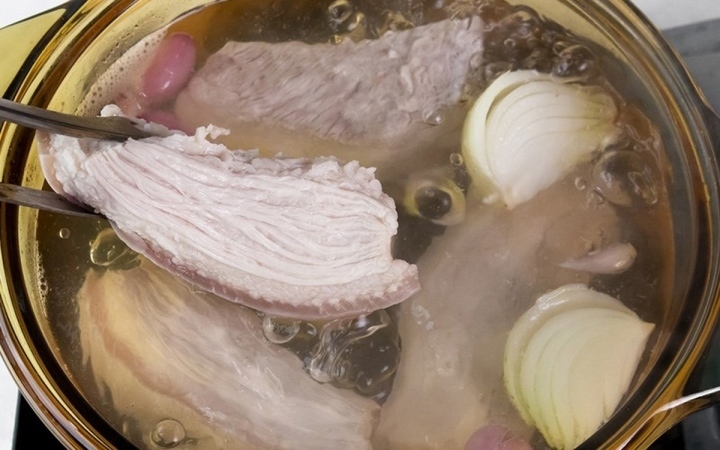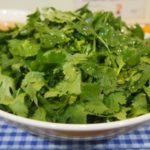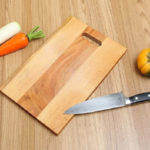For a long time, when preparing pork , housewives have always assumed that blanching the meat in boiling water before cooking is a way to clean and ensure food safety. However, many people still question whether it is necessary to blanch the meat in boiling water, and if this method is effective and necessary.
Should you blanch the meat in boiling water?
According to Assoc. Prof. Dr. Nguyen Duy Thinh, former lecturer at Hanoi University of Technology, blanching meat in boiling water is a highly mistaken habit of many housewives. Putting the meat in boiling water will cause the meat to contract. At high temperatures, the surface proteins of the meat clump together, preventing any dirt or harmful substances from escaping.
Therefore, you should only use boiling water to sterilize in case the meat is infected. If the meat is unfortunately infected, it can be treated by boiling it thoroughly, as the bacteria will die and the meat will become safer.

Should you blanch the meat in boiling water before cooking?
Instead of blanching the meat in boiling water, if you want to remove dirt and chemicals from the pork, the best way is to wash it with clean water several times after buying. In addition, you can use salt or diluted saltwater to knead the meat, then rinse it with clean water.
Furthermore, you can soak the meat or bones in rice water for about 1 hour. This method is very effective in removing dirt from the surface of the ribs, excess blood in the meat, and bone marrow, while reducing the gamey smell and making the dish more delicious.
You can also put the bones or meat in a bowl of water mixed with a little white vinegar, soak for about 15 minutes, then scoop it out, rinse it clean, and drain the water before cooking. Vinegar softens the meat and removes excess blood from it.
When boiling meat, it is best to use cold water, and you can add onions and spices to make the meat more fragrant and sweet. During the cooking process, if you see any foam or scum, use a spoon to remove it.
How to choose good pork
Firstly, you should buy meat from reputable, quality stores that have been inspected to ensure safety.
When choosing meat, look for a piece with a dry outer layer, slightly firm surface; the cut surface of the meat is bright pink, the fat is tender, the meat is firm, with good elasticity (press your finger into the meat and it does not leave a nail mark).
Good meat is a piece with bright fat, firm texture, distinctive smell, smooth and clear joint surface, lively and transparent fluid, marrow closely attached to the bone tube, and elastic. Note that you should not choose meat with little fat, loose texture, and a different color. If the pork has been injected with medicine, the meat is usually soft, with less elasticity.
A piece of meat with the following signs indicates spoilage and should not be bought: The outer surface of the meat starts to become sticky or very sticky (depending on the degree of spoilage), the cut surface is slightly wet, less elasticity (when you press your finger into the meat and release it, a dent remains); dark fat, reduced firmness, foul odor, joint surfaces with a lot of stickiness, cloudy fluids, easy detachment of marrow from the tube, and a dark or brown color.
According to VTC.vn
8 Common Mistakes People Make with Cutting Boards
Are you using your cutting board correctly? Many Vietnamese households rely on cutting boards in their kitchen, but not everyone knows how to use them properly, especially when it comes to wooden cutting boards. Check out these 8 mistakes to avoid when using a cutting board to ensure both hygiene and safety for everyone in your family.
Is Refrigerated Leftovers Linked to an Increased Risk of Cancer?
Dr. Lam Van Man, Head of Research, Development and Technology Transfer Department of the Institute of Safety Food, has warned of the risk of food poisoning when reheating leftovers from the refrigerator. But what should we be aware of when it comes to the possibility of these leftovers causing cancer? Here, we explore what the experts have to say on the matter and offer some tips for safe eating.





































